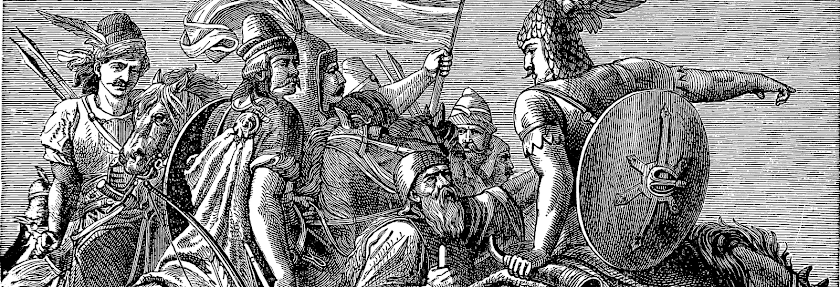Sometimes it's good to get back on the player side of the table and in the player mindset (while I didn't DM anything long-term last semester, I also only DMed rather than playing). Something that has struck me about playing Traveller in comparison to playing D&D / Trailblazer / d20 in general is that in Traveller, Damage Hurts. Damage in Traveller is applied to the recipient's physical ability scores, with according loss of carrying capacity and bonuses to skills. You can sustain Endurance / Constitution loss pretty easily, since it's not used for all that much except carrying capacity and resisting poison (most of the time...), but once you start to lose Dexterity and Strength, it really starts to hurt. If you were to put it in d20 terms, it would be like taking penalties to attack, damage, and skills after you take about a third of your HP in damage.
This makes combat a much bigger deal than in d20, because you might be able to handle two real combats before engaging in a third would be suicide. Arguably, Traveller's healing and armor systems are designed to compensate for this; after-combat first aid can restore a good chunk of the damage taken after each combat, provided that you have good (and lucky) medics, and high-grade armor can take much of the sting off of most attacks, since it provides a direct damage reduction-type effect to all attacks. Military-grade combat armor, in particular, makes Drew's character more-or-less impervious to small arms fire (DR 14 against ~3d6 damage from an unskilled shooter with a rifle yields average damage of 0), but the rest of us have armor in the 5-8 range, and between 20 and 30 'hit points' of physical stats, so we can each take somewhere between 4 and 10 hits from a rifle before dying - but we'll be rendered combat-ineffective by penalties long before that happens.
In D&D, on the other hand, this reduction in combat effectiveness as a result of damage just isn't a thing. If you've still got 1 HP left, you act without penalty. In D&D, reduction in combat effectiveness is handled via negative status effects, buffs wearing off or being dispelled, or similar. D&D characters have enough hit points to avoid serious risk of death in most fights (under standard 3.x encounter balance after about second level, anyways), so the trick becomes to wear down their resources over many fights so that when they get to the Boss, they're actually threatened. D&D characters beyond low levels have a wide variety and a huge volume of spells, magic items, and special abilities to supplement their HP which are what is really being worn down during iterated combats.
The real point here, though, isn't to just state these differences. The interesting part is the differences in play-style which these different resourcing schemes generate. In Traveller, we seem to try to avoid every avoidable combat, because if we're torn up from an avoidable combat and happen on an unavoidable one, then we're really badly off. In (modern editions of) D&D, this is less of an issue because you have a relative abundance of resources, and combat is often lucrative - that's another point of some difference from Traveller, where "post-combat loot" is very rarely a thing.
This has come to my attention because I've been looking at hacking a system for the Western Marches style game that I am bound and determined to try running eventually; the idea just won't die. A Traveller core is tempting, because it's a nice simple system with a lot of flexibility, but D&D is familiar to more players and more crunchy in the resource management... and it permits two fights in a row without a serious chance of death. The conclusion, then, is that if I want to use Trav as a core, I need to make good armor or good healing pretty available; of these, I feel that armor is preferable, since then you do get a really gradual diminishing of capability. However, enough post-combat healing that people aren't just toast after a lucky hit or two would also not go amiss. On the flip side, I think Trailblazer's short rest half of HP healing is just too much; it removes the last vestiges of HP as a resource to be shepherded, unless I start rolling for random encounters every time PCs decide to take a short rest, which seems... over-zealous.

There is, of course, the option which Gamma World takes, which is give everyone all of their resources back each fight, and make every fight potentially lethal. Also, very little in the way of in-fight healing helps avoid the problem of healz/tank forever.
ReplyDeleteSure, but if you do that, then you have no strategic resource management. I suppose Gamma World still does with Omega Tech, though, right?
Delete